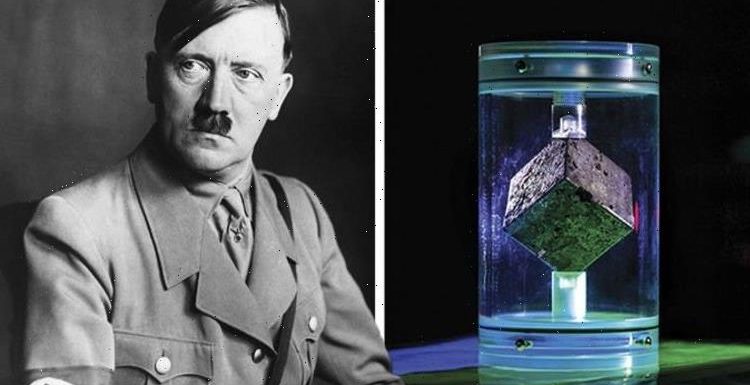
Hunting Hitler: Researchers hear of possible Argentinian bunker
We use your sign-up to provide content in ways you’ve consented to and to improve our understanding of you. This may include adverts from us and 3rd parties based on our understanding. You can unsubscribe at any time. More info
Today, only 14 cubes remain accounted for out of more than 1,000 used by the Nazis in unsuccessful experiments with weapons of mass destruction. After the fall of Adolf Hitler’s Germany in 1945, Allied forces transported at least 659 cubes of the fissile material to the United States. What happened to the cubes after they arrived in America remains a mystery, however, with only a handful of research institutions still in possession of the dangerous Nazi relics.
One such cube unexpectedly arrived at the University of Maryland in 2013, nearly 70 years after the end of World War 2.
At the time, researchers were simply stunned by the magnitude of their discovery, with material scientist Timothy Koeth saying: “I was stunned. I didn’t have words.”
Professor Koeth and historian Miriam Hiebert have now penned a book about the mysterious cubes – and they think they may have finally solved the Nazi mystery.
Their research was also published in 2019 in the journal Physics Today.
According to the researchers, the uranium cubes are “the only living relic” of Nazi Germany’s effort to create nuclear bombs.


Professor Koeth told Insider they served as the “motivation for the entire Manhattan Project”, which produced the world’s first nuclear bomb in July 1945.
During their experiments with uranium, the Nazis created at least two prototype nuclear reactors.
One of these consisted of 664 uranium cubes stringed together and suspended into a pool of heavy water – water in which hydrogen atoms are replaced with deuterium.
A second, smaller reactor only used about 400 cubes of uranium at its core.
About a month before Germany’s unconditional surrender on May 7, 1945, Allied forces retrieved about 1.6 tons of the fissile material near the German town of Haigerloch and shipped it back to the US.
But once they arrived in the US, their trail went cold and the majority of the cubes remain missing.
Donald Trump explains what uranium is
Dr Hiebert said: “We currently know of 14, out of almost 1,000 that existed in total, so most of them are still unaccounted for.”
Some of the cubes are found today at institutions like the Pacific Northwest National Laboratory (PNNL) in Washington state.
Measuring about two by two inches, the uranium cubes look rather inconspicuous.
But they are all made from the heaviest and one of the most dangerous materials on Earth – a radioactive element that can be fashioned into destructive projectiles and nuclear bombs.
According to the Maryland researchers, clues have emerged through their research to suggest the retrieved Nazi uranium was repurposed into America’s own nuclear programme.


Some, however, were clearly “picked off the pile” and handed and kept by various people as souvenirs.
Dr Hiebert, who was a PhD candidate at the time, said in 2013: “There’s this weird club they don’t know they’re a part of, and we want to get some of those stories.”
Professor Koeth presently owns two of the cubes after one was gifted to him on his birthday about 10 years ago, and the second was given to him by an anonymous donor.
When it landed on his desk eight years ago, it came with a handwritten note that read: “Taken from Germany from nuclear reactor Hitler tried to build. Gift of Ninninger.”
Robert D. Nininger was a geologist working with the US Atomic Energy Commission in the Fifties.
Professor Koeth and Dr Hiebert have since unearthed documents to show Nininger worked with the Manhattan Project.
Questions, however, remain about the second Nazi nuclear and what came to be of the other 400 Nazi cubes.
According to the Maryland researchers, it is likely the cubes were sold on the black market in the USSR.
Source: Read Full Article